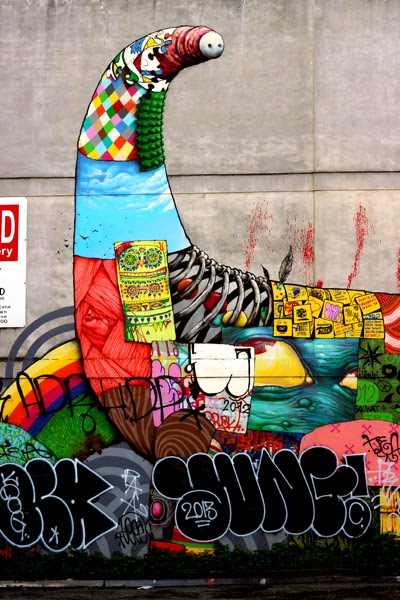 |
| Alstons Corner Building (1913), Collins and Elizabeth Street, Melbourne |
I found another painted sign while walking around the city. When I took the photo I was unsure of the actual date, but the colour pallet and fading of the paint as well as the typesetting of the sign to me indicated it had some age to it. With a little bit of research I uncovered part of the story of the Newman's Jewellers sign.
 |
| Hand painted Newman's Jewellers sign, side of Alstons Corner |
If you look really closely you can see there are two layers to the Newman's Jewellers sign. The link to this black and white photo shows you the original sign, which proudly reads Newman's Jewellers. Unfortunately I could not find a date for this photo but I assume it was taken not long after the sign was painted. If you look closely at the photo I took you can see the original type in red paint, and then a second layer on top which is indicating that they have relocated. Something like this is so easily missed or forgotten about, which in many ways is sad as Newman's Jewellers was a significant business during it's time.
Newman's Jewellers was founded in 1852. To put this into a historical perspective, this is one year after the beginning of the Victorian Gold Rush. It highlights how the city of Melbourne was built on the proceeds of gold, and that people flocked to the city to set up businesses and take advantage of this new found wealth. Obviously Newman's Jewellers was a solid business and was well regarded and trusted in the community as it was around for a long time. They moved from their location at Elizabeth street, where the sign is, to a location in Collins Street some time in 1930.
If you are interested here is a link to a digitised newspaper article from the 27th of June 1931, which makes reference to the Newman's business and explains it's standing and important place as a jewellery company in Melbourne.
It would be curious to see if any academic research has been done on this sign. Conservation research could uncover interesting things like the type of paint that was used and how many times it was repainted. But isn't it incredible that something of this age which has been exposed to the elements and left unprotected is still with us today?!?!
Love
Mosey x














































